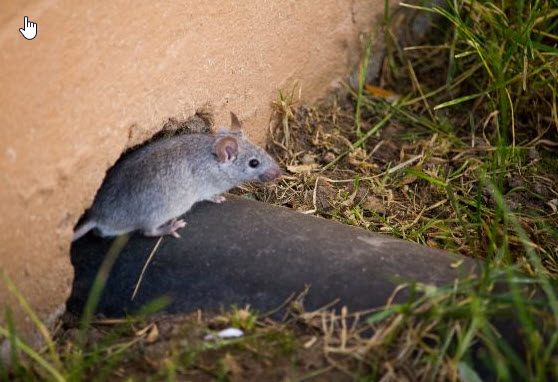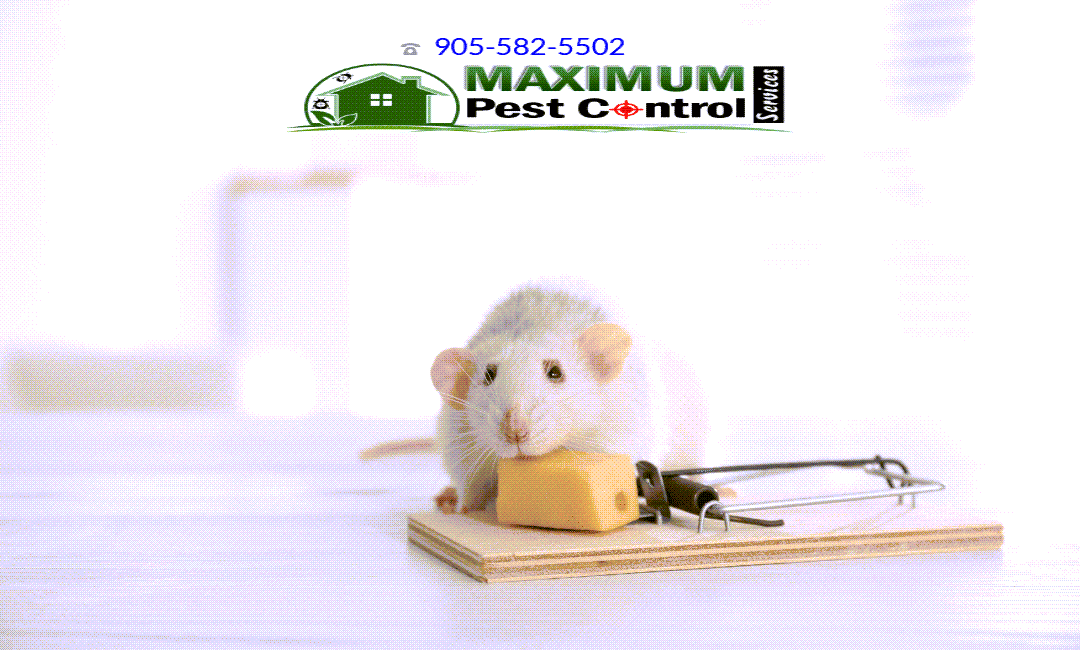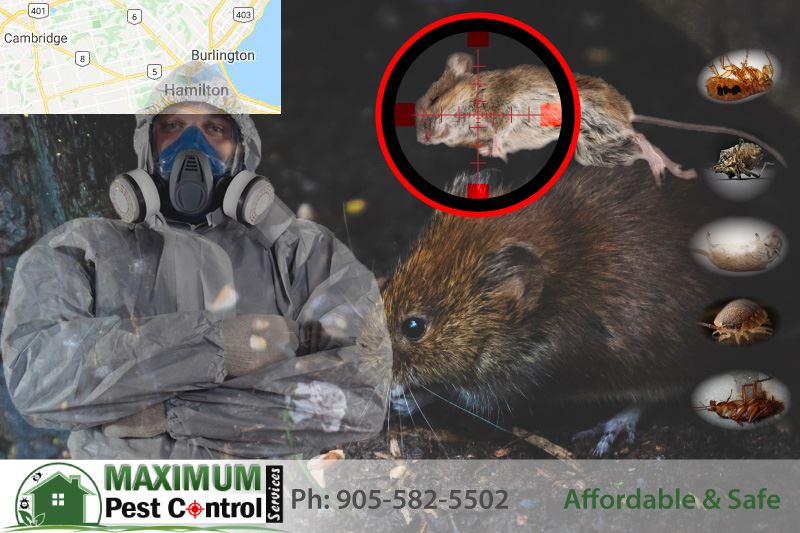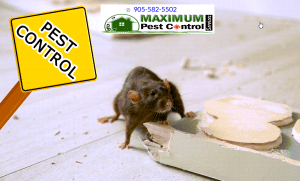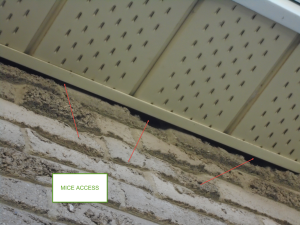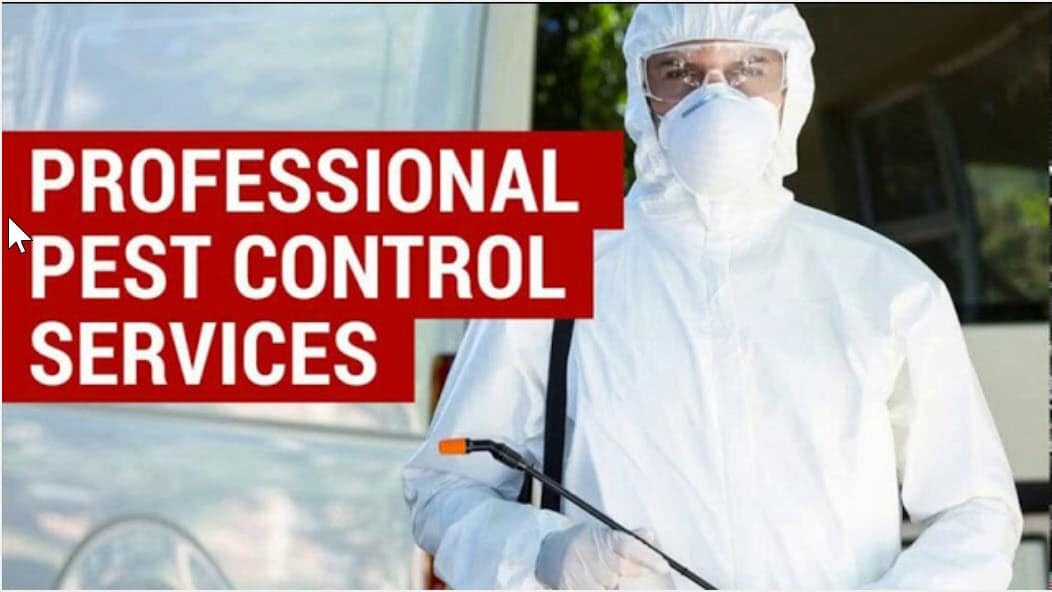
The Best Effective Guide to Mice Control Solutions That Work
Whether you’re a homeowner or a renter, dealing with mice can be both frustrating and unsettling. These tiny invaders not only cause damage to your property but also pose health risks to you and your family. How do you prevent them from not coming back permanently? The ultimate long-term solution for effective mice control that work requires a multi-faceted approach combining prevention, maintenance, and possibly professional help. Understanding the problem, identifying signs of an infestation, and implementing a solid prevention plan are key steps to keeping your home mouse-free.
“ For the mice issue to correctly solved is best to focus on all the exterior details, identifying all around gaps, then cover them along with other variety of tried-and-true successful tactics, this will help the issue to be solved fast and permanently ”
In this guide, we’ll explore various aspects of mice control from identifying entry points to choosing the best traps. By the end, you’ll be well-equipped to handle and prevent mice infestations with confidence.
Understanding The Mice Problem: Why Do They Invade?
Mice are more than just a nuisance; they can be a hazard to both your home and health. But to tackle the issue effectively, it’s essential to understand why these little invaders are attracted to your space in the first place.
Survival Instincts: At the core of the invasion is survival. Mice seek out your home primarily for shelter, food, and water. When the conditions outside become unfavourable, such as during colder months, they look for warmer, cozier environments that can provide easy access to sustenance.
Food Sources: Your kitchen is a smorgasbord for these tiny intruders. Crumbs on the floor, poorly sealed food containers, and overflowing garbage cans are irresistible lures. Mice have an acute sense of smell and can detect food from considerable distances, making your pantry a prime target.
Safe Havens: Mice need shelter that will keep them hidden from predators and humans alike. They typically look for cluttered areas like basements, attics, and garages, where they can build nests out of soft materials such as paper, fabric, and insulation. Once they find a suitable spot, they’ll breed rapidly, compounding your problem.
Attractants and Ecology: Beyond immediate needs, your property’s general ecology can play a role. Overgrown vegetation, open compost piles, bird feeders, and pet food left outdoors all contribute to making your home an attractive haven for mice. Even seemingly negligible aspects, like pet doors or wood piles adjacent to your house, can facilitate their entry.
Understanding these factors helps you adopt more effective prevention measures. By addressing why mice invade, you can make your home far less inviting, significantly reducing the chances of an infestation.
Signs Of A Mice Infestation: What To Look For
Mice are skilled at hiding, which makes identifying an infestation tricky but not impossible. Seeing droppings is one of the most obvious indications. These are small, dark, and shaped like rice grains and are commonly found near food sources or in hidden spots like under sinks and along baseboards. Additionally, you might notice gnaw marks on furniture, wires, or food packaging, as mice need to chew continuously to keep their teeth from growing too long.
Another indicator is the tell-tale musky odor that mice leave behind. This smell often originates from nesting areas and becomes more noticeable as the infestation grows. Pay close attention to unexplained smells, especially in less frequently trafficked areas of your home such as attics, basements, and behind appliances.
You might also hear unusual noises, particularly at night, since mice are nocturnal creatures. Scratching sounds within walls, ceilings, or under floorboards can hint at mouse activity. In some cases, you may even catch sight of nests. These are typically made from shredded paper, fabric, or other pliable materials and are hidden in secluded areas.
Don’t forget to look for tell-tale tracks. Dusty environments can reveal footprints or tail marks, and if you suspect a high-traffic area, try sprinkling a thin layer of flour or baby powder and check for tracks the next day. Additionally, observing unusual pet behavior, such as your cat or dog being unusually alert in certain areas, can alert you to the presence of mice.
Lastly, it’s important to note that sightings of live or dead mice are a clear sign of an infestation. Remember, spotting even a single mouse is cause for concern, as where there is one, there are likely more lurking nearby.
Common Entry Points: Securing Your Home
When it comes to securing your home against mice, identifying their entry points is crucial. Mice can squeeze through gaps as small as a dime, so even the tiniest of openings could serve as an open invitation.
Begin by thoroughly inspecting your home’s exterior. Give the foundation, windows, and doors further consideration. Look for cracks, gaps, or holes that might offer an easy entryway. Don’t forget to check utility lines and pipes, as these are common routes for mice to enter.
Once you’ve identified potential entry points, it’s time to seal them. Fill any minor gaps using materials such as steel wool and caulk for best results. For larger holes, consider using hardware cloth or metal sheeting. Not only are these materials durable, but they also deter mice more effectively than softer substances. Ensure that all screens on windows and vents are intact and without holes.
Beyond sealing obvious gaps, consider the less apparent ones. Dryer vents, attic spaces, and even chimneys can be potential entries. Installing vent covers and chimney caps can prevent mice from accessing these areas. Regularly checking and maintaining these covers is also important to ensure they haven’t deteriorated over time.
Don’t overlook the garage. It’s another common entry point for mice. Ensure the door seals properly when closed and there are no gaps along the edges. Consider adding a door sweep for additional protection if needed.
Remember, a proactive approach is the key. By diligently securing your home and addressing potential entry points, you create a strong first line of defense against these unwelcome guests.
Effective Traps: Choosing The Right Ones
When it comes to selecting the ideal traps for mice control, you have a range of options to consider. The three most popular types for best mice control products are snap traps, live traps, and electronic traps. Each has unique benefits, and choosing the right one often depends on your personal preference and comfort level.
Snap Traps
Snap traps are perhaps the most well-known and widely used mice traps. They work by using a quick trigger system that snaps down on the mouse when it takes the bait. These manual placed traps instantly kill the rodent, ensuring fast outcome. However, they do require careful placement and frequent checking to ensure efficacy and humane disposal.
Live Traps
For those who prefer a more humane approach, live traps are a fantastic option. With the help of these traps, you may catch mice and release them far from your house without endangering them. They are typically designed with a one-way door that lets the mouse enter but not exit. Just remember, to be effective, you’ll need to check these traps frequently and relocate the mice promptly.
Electronic Traps
Electronic traps utilize batteries to deliver a high-voltage shock to mice once they enter the trap. These are a modern, highly effective option for those looking for a clean and efficient solution. Electronic traps are easy to set up and often designed with features that prevent humans and pets from accidental shocks, making them safe to use in most households.
Regardless of the type you choose, proper placement is key to successfully trapping mice. Mice tend to travel along walls and avoid open spaces, so placing traps along walls, behind objects, and near entry points can significantly increase your chances of catching them. Don’t forget to use enticing bait—peanut butter is a favourite among rodents!
Natural Deterrents: Eco-Friendly Solutions
Taking a natural approach to dealing with mice can be just as effective as traditional methods while being kinder to the environment. Let’s explore some Eco-friendly solutions you can implement to repel these unwanted visitors.
Peppermint Oil: Mice despise the strong smell of peppermint oil. Soaking cotton balls in peppermint oil and placing them in problematic areas can act as a deterrent. Also, considering it’s pleasant for humans, it makes for an excellent natural solution to your mice problem.
Planting Natural Repellents: Certain plants like lavender, mint, and marigolds can be unappealing to mice. By planting these around your home or garden, you create a natural barrier that dissuades these invading rodents from entering inside.
Use of Spices: Ingredients such as cayenne pepper, cloves, and chili flakes can also act as effective natural deterrents. Sprinkle these spices in areas where you suspect mice activity, and you’ll find them steering clear of these spaces.
Biological Controls: Integrated Pest Management (IPM) principles promote the use of natural predators to control pest populations. Adopting this approach means encouraging animals like owls or using products derived from microorganisms to maintain a balance in your ecosystem and keep mouse populations in check.
While these natural deterrents can be incredibly effective, consistency is key. Regularly applying these methods and monitoring their effectiveness will ensure that your home remains mice-free, all while keeping Mother Nature in mind.
Ultrasonic Devices: Do They Really Work?
Ultrasonic devices offer a seemingly magical solution to your mice problem. By emitting high-frequency sound waves that are supposed to deter pests, these devices are marketed as a non-toxic and easy-to-use alternative. But do they really work?
It’s important to understand how these gadgets are designed to function. The idea is that the high-frequency sounds, which are inaudible to humans but can be heard by rodents, create an uncomfortable environment for mice. In theory, this should drive them away from your home. As expert in this field we doubt these devices work in keep them at bay.
Studies on the effectiveness of ultrasonic devices have yielded mixed results. Some homeowners swear by them, reporting significant reductions in pest activity, while scientific evidence remains inconsistent. In controlled environments, these devices might show promise, but real-world applications introduce variables that can affect their performance.
Pros:
- Non-toxic: Safe for children and pets, as it doesn’t involve chemicals or poisons.
- Simple to work with: Just plug it into an electrical outlet, and it immediately will start to work.
Cons:
- Limited range: Ultrasonic waves can be obstructed by furniture, walls, and other objects, reducing their effectiveness.
- Adaptation: Mice may eventually get used to the sound, rendering the device less effective over time.
So, should you invest in ultrasonic devices for mice control? If you’re looking for a low-effort, non-toxic method, it might be worth a try. However, it’s advisable to use these devices in conjunction with other proven methods of pest control, like traps and sealing entry points, for a more comprehensive approach.
Maintaining Cleanliness: The Foundation Of Mice Control
One of the most crucial steps in preventing mice infestations is maintaining a clean and clutter-free environment. Mice are attracted to food scraps, crumbs, and accessible water sources. Hence, ensuring that your kitchen and dining areas are spotless can significantly reduce the likelihood of an infestation.
Store food properly: Keep all food items in airtight containers, and avoid leaving pet food out overnight. This prevents mice from gaining access to an easy meal. Additionally, regularly inspect your pantry for any signs of mice and immediately clean up spills and crumbs.
Regular cleaning: Vacuum and sweep your floors frequently, especially in areas where food is prepared or consumed. Clean underneath appliances, furniture, and in hidden corners to remove any potential nesting materials or food sources. Remember, what you don’t see can still attract mice!
Waste management: Dispose of garbage regularly and ensure that trash bins have tight-fitting lids. Outdoor trash bins should be kept away from the house and preferably elevated off the ground. This minimizes the attraction and entry points for mice.
By incorporating these cleanliness habits into your daily routine, you not only deter mice but also promote a healthy living environment. These steps form the foundation of comprehensive mice control strategies, making your home less inviting to these unwanted guests.
Pet Adaption Solutions: Can Cats And Dogs Help The Situation?
Yes, your pets can indeed be part of your rodent control strategy program. Many households have relied on the natural hunting instincts of cats to keep mice populations in check. Cats are excellent hunters and their mere presence can serve as a strong deterrent for mice.
Dogs, especially certain breeds known for their hunting prowess like terriers, can also be effective. While dogs may not have as keen an interest in mice as cats do, their presence and sense of smell can alert you to an infestation.
However, it’s crucial to understand that while pets can be helpful, they are not a foolproof solution. Some mice might still evade your furry friends, and relying solely on pets might not address the root of the problem.
Remember, integrating pets into your mice control strategy should be complementary to other methods such as traps and environmental changes. Make sure to monitor your pets’ interactions with any traps or poisons to keep them safe as well.
So, while cats and dogs can contribute significantly to keeping your home mice-free, don’t ignore the need for a comprehensive approach to ensure a long-term solution.
Long-Term Prevention: Keeping Mice Out For Good
Implementing long-term prevention strategies is paramount in ensuring your home remains mice-free. One effective approach is Integrated Pest Management (IPM), a holistic method that not only focuses on eradicating mice but also addresses the root causes of the infestation. With IPM, you’re taking a sustainable, economically beneficial route to pest control.
Integrated Pest Management (IPM) uses several types of approaches. Prevention is key here: managing the environment to deter pests from becoming a problem in the first place. For instance, keeping areas clean and food sources secure can significantly reduce the chances of a mice invasion. Additionally, acceptable pest levels are considered while recognizing that completely eliminating every mouse might be impractical and expensive.
Regular monitoring plays a crucial role in IPM. This involves routine observation and inspection to identify early signs of mice activity. By keeping detailed records and understanding the behavior and reproductive cycles of mice, you can time your interventions for maximum effectiveness. This proactive approach helps in maintaining control over the situation without being over-reliant on chemicals.
Implementing physical barriers is another vital part of long-term prevention. Sealing exterior gaps and other potential entry points is crucial to mice control success. This might include using steel wool or caulk to block holes and ensuring that doors and windows fit tightly. Remember, mice can squeeze through incredibly small openings, so thoroughness is key.
Another component of IPM is biological control, where natural predators of mice, such as certain types of birds or even household pets, help keep the population in check. Additionally, mechanical control methods like traps are utilized, tailored to your specific situation and adjusted as needed based on monitoring data.
It’s also beneficial to educate yourself on proper waste management practices. Store food in airtight containers, keep your home clutter-free, and manage garbage effectively. Taking these steps deprives mice of the food and nesting sites they need to survive.
Implementing IPM effectively will not only keep your home mice-free but do so in an environmentally responsible way. By integrating these tactics into your regular maintenance routine, you’re setting up a powerful defense against future infestations. Remember, consistency and vigilance are your best allies in this ongoing battle.
Regular Home Inspections: Staying Vigilant
To keep mice at bay, conducting regular home inspections is non-negotiable. This practice involves more than just a casual glance around your home; it requires a meticulous approach to identify potential entry points and signs of infestation early on. Early detection can prevent a minor issue from snowballing into a full-blown infestation.
Set a Schedule: Plan to inspect your home at least once a month. Put it on your calendar to help you not forget. Consistent inspections help you spot any new developments quickly.
Key Areas to Inspect: Focus on areas that mice frequent. This includes basements, attics, kitchens, and around any piping or wiring. Pay attention to small, dark spaces where mice can nest unnoticed.
- Check for gnaw marks on wood, wires, and plastic.
- Look for oily rub marks, which are left by mice fur.
- Inspect for droppings in hidden and hard-to-reach areas.
- Ensure food storage areas are secure and free from nibbles.
Use Technology: Incorporate tools like motion-activated cameras or sensors to monitor for mouse activity, especially in rarely visited parts of your house. These devices can provide insights into mouse behavior and movement patterns.
Record Keeping: Keep detailed records of what you find during each inspection. Documenting these findings can help you notice patterns and changes over time, allowing for targeted action.
Finally, maintain vigilance. Even after you’ve sealed gaps and set traps, regular home inspections are vital for long-term success. They ensure that any new attempts by mice to infiltrate your home can be swiftly dealt with, keeping your living space rodent-free.
Sealing Gaps And Cracks: Strengthening Your Defense
One of the simplest yet most effective ways to keep mice out of your home is by sealing gaps and cracks. Mice can squeeze through openings as small as a dime, so thorough inspection and sealing are crucial. Start by examining your home’s exterior, looking for gaps around windows, doors, and the foundation. Particular care should be paid to vents and pipelines that allow utilities to enter your home.
Materials You’ll Need: To seal these gaps, you’ll need a combination of materials such as steel wool, caulk, and weather stripping. Steel wool is particularly effective because mice find it difficult to chew through. For larger gaps, use a combination of steel wool and expanding foam to fill the spaces.
Where to Seal:
- Windows and Doors: Install weather stripping around windows and doors to close any gaps. For a more secure solution, consider using door sweeps at the bottom of doors.
- Pipes and Vents: Use steel wool or copper mesh around pipes and vents. Seal with caulk or expanding foam to secure the material in place.
- Foundation and Walls: Inspect the foundation and exterior walls for cracks and gaps. Fill these with masonry repair material or concrete caulk.
- Attic and Roof: Check the attic and roof eaves for openings. Seal these with durable materials like metal flashing and construction adhesive to keep mice out. Caulk between the soffits and the walls so they wont climb within.
After sealing all potential entry points, maintain vigilance by conducting regular inspections. While sealing gaps and cracks significantly reduces the likelihood of mice entering your home, it is just one part of a comprehensive mice control strategy. Combine it with other measures discussed in this guide to ensure an effective, long-term solution.
Professional Extermination: When To Call The Experts
Sometimes, the mice problem can spiral out of control despite your best efforts. This is when professional extermination becomes essential. But how can you tell it’s time to call in the pest control company experts to help with the situation?
If you’ve tried several DIY methods and the infestation persists, that’s a sure sign you need professional help. Mice are more than just a nuisance—they pose significant health risks by spreading diseases and contaminating food. A persistent infestation indicates that the nest might be difficult to locate or that mice are entering from multiple points. Professionals have the experience and equipment to address these complexities effectively.
Structural Damage
One major indicator that it’s time to seek professional help is visible structural damage. Mice chew through wires, insulation, and even structural elements of your home, which can be both dangerous and costly to repair. If you notice gnaw marks or unexplained damage to your property, it’s time to bring in the experts. They not only eliminate the current problem but also offer solutions to prevent future entry.
Health Concerns
Health risks are another significant reason to consider professional extermination. If you or anyone in your household is experiencing unexplained allergies, respiratory issues, or other health concerns, mice might be the culprits. Professionals can help mitigate these risks by thoroughly inspecting and eliminating the infestation.
Recurring Infestations
Recurring mice problems can be particularly frustrating. If you’ve faced mice infestations multiple times, there’s likely an underlying issue that requires a professional touch to resolve. Experts use an integrated pest management approach, combining various methods to not only eliminate the current infestation but also to prevent future occurrences.
Remember, professional exterminators bring specialized knowledge, tools, and techniques that can save you time, effort, and potentially significant costs down the line. When you’re dealing with a persistent, hazardous, or complex mice problem, it’s wise to enlist professional assistance for a long-term solution.
Are You Dealing with Mice issues Now? If you’re dealing with a mouse issue at home or looking for commercial mice control consider turning to Maximum Pest Control Services Team. Their skilled insured and bonded certified technicians are years of well trained and ready to tackle any residential or business rodent infestation. Using their cutting edge techniques and high quality skills, they can surely help eradicate rodents, creating safe and clean space. Don’t ignore a mouse problem till it gets bigger—reach out to Maximum Pest Control Services today for an mice inspection. Contact Us Today (905) 582-5502.

